Uncovering a novel role of PLCβ4 in selectively mediating TCR signaling in CD8+ but not CD4+ T cells
- PMID: 33970189
- PMCID: PMC8111461
- DOI: 10.1084/jem.20201763
Uncovering a novel role of PLCβ4 in selectively mediating TCR signaling in CD8+ but not CD4+ T cells
Abstract
Because of their common signaling molecules, the main T cell receptor (TCR) signaling cascades in CD4+ and CD8+ T cells are considered qualitatively identical. Herein, we show that TCR signaling in CD8+ T cells is qualitatively different from that in CD4+ T cells, since CD8α ignites another cardinal signaling cascade involving phospholipase C β4 (PLCβ4). TCR-mediated responses were severely impaired in PLCβ4-deficient CD8+ T cells, whereas those in CD4+ T cells were intact. PLCβ4-deficient CD8+ T cells showed perturbed activation of peripheral TCR signaling pathways downstream of IP3 generation. Binding of PLCβ4 to the cytoplasmic tail of CD8α was important for CD8+ T cell activation. Furthermore, GNAQ interacted with PLCβ4, mediated double phosphorylation on threonine 886 and serine 890 positions of PLCβ4, and activated CD8+ T cells in a PLCβ4-dependent fashion. PLCβ4-deficient mice exhibited defective antiparasitic host defense and antitumor immune responses. Altogether, PLCβ4 differentiates TCR signaling in CD4+ and CD8+ T cells and selectively promotes CD8+ T cell-dependent adaptive immunity.
© 2021 Sasai et al.
Conflict of interest statement
Disclosures: H. Nagaoka reported personal fees from Ehime University outside the submitted work. E. Takashima reported personal fees from Ehime University outside the submitted work. No other disclosures were reported.
Figures



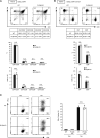

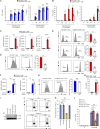
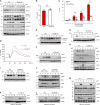

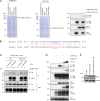
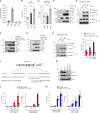


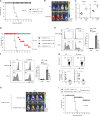
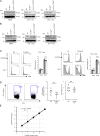

Similar articles
-
Signaling through a CD3 gamma-deficient TCR/CD3 complex in immortalized mature CD4+ and CD8+ T lymphocytes.J Immunol. 1998 Sep 15;161(6):3152-60. J Immunol. 1998. PMID: 9743383
-
IL-2 Modulates the TCR Signaling Threshold for CD8 but Not CD4 T Cell Proliferation on a Single-Cell Level.J Immunol. 2017 Mar 15;198(6):2445-2456. doi: 10.4049/jimmunol.1601453. Epub 2017 Feb 3. J Immunol. 2017. PMID: 28159902 Free PMC article.
-
Murine CD8+ T cells that specifically delete autologous CD4+ T cells expressing V beta 8 TCR: a role of the Qa-1 molecule.Immunity. 1995 Feb;2(2):185-94. doi: 10.1016/s1074-7613(95)80079-4. Immunity. 1995. PMID: 7895175
-
Two receptors, two kinases, and T cell lineage determination.Sci Signal. 2010 Mar 23;3(114):pe11. doi: 10.1126/scisignal.3114pe11. Sci Signal. 2010. PMID: 20332426 Review.
-
Functional heterogeneity and adaptation of naive T cells in response to tonic TCR signals.Curr Opin Immunol. 2021 Dec;73:43-49. doi: 10.1016/j.coi.2021.09.007. Epub 2021 Oct 12. Curr Opin Immunol. 2021. PMID: 34653787 Free PMC article. Review.
Cited by
-
Targeting one-carbon metabolism for cancer immunotherapy.Clin Transl Med. 2024 Jan;14(1):e1521. doi: 10.1002/ctm2.1521. Clin Transl Med. 2024. PMID: 38279895 Free PMC article. Review.
-
IFNγ-inducible Gbp4 and Irgb6 contribute to experimental cerebral malaria pathology in the olfactory bulb.mBio. 2025 Aug 13;16(8):e0124925. doi: 10.1128/mbio.01249-25. Epub 2025 Jul 3. mBio. 2025. PMID: 40607809 Free PMC article.
-
Phospholipase C β4 promotes RANKL-dependent osteoclastogenesis by interacting with MKK3 and p38 MAPK.Exp Mol Med. 2025 Feb;57(2):323-334. doi: 10.1038/s12276-025-01390-8. Epub 2025 Feb 3. Exp Mol Med. 2025. PMID: 39894822 Free PMC article.
-
In vivo tumor immune microenvironment phenotypes correlate with inflammation and vasculature to predict immunotherapy response.Nat Commun. 2022 Sep 9;13(1):5312. doi: 10.1038/s41467-022-32738-7. Nat Commun. 2022. PMID: 36085288 Free PMC article.
-
TCR Signals Controlling Adaptive Immunity against Toxoplasma and Cancer.Adv Exp Med Biol. 2024;1444:177-193. doi: 10.1007/978-981-99-9781-7_12. Adv Exp Med Biol. 2024. PMID: 38467980
References
-
- Anderson, D.L., and Tsoukas C.D.. 1989. Cholera toxin inhibits resting human T cell activation via a cAMP-independent pathway. J. Immunol. 143:3647–3652. - PubMed
Publication types
MeSH terms
Substances
LinkOut - more resources
Full Text Sources
Other Literature Sources
Molecular Biology Databases
Research Materials

